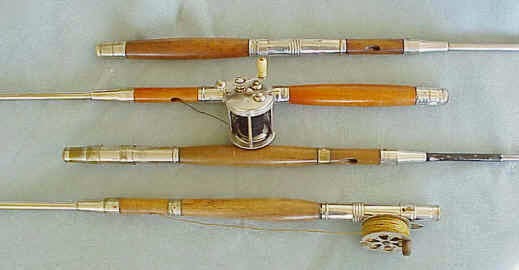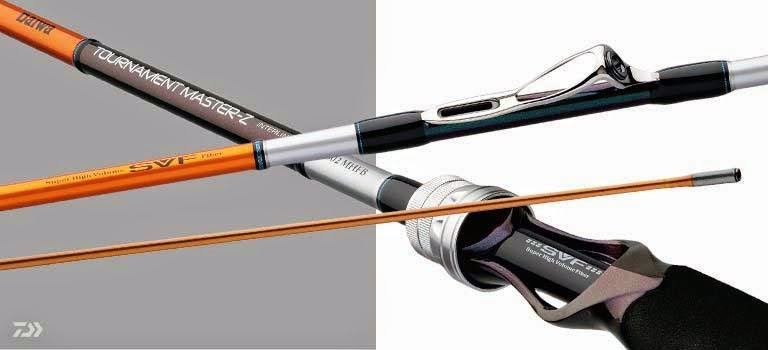 Anyone who uses a bait caster more than likely knows what a backlash is all about and how frustrating one of 'em sometimes can be. Imagine, though, what it must have been like for anglers before the level-wind reel came along. According to what I read, you really had a mess on your hands with those early (pre-level wind) reels when one of them backlashed. And the situation was made worse with the persnickety silk line used back in those days.
Anyone who uses a bait caster more than likely knows what a backlash is all about and how frustrating one of 'em sometimes can be. Imagine, though, what it must have been like for anglers before the level-wind reel came along. According to what I read, you really had a mess on your hands with those early (pre-level wind) reels when one of them backlashed. And the situation was made worse with the persnickety silk line used back in those days.The inventor who solved this problem was William Shakespeare, Jr., who created a complicated twin worm-gear, level-winding mechanism on a jeweler's lathe and obtained his patent in 1896. (There appears to be some conflict in this date. I found one source that said Shakespeare obtained his first patent on Oct. 5, 1897.) With this patent, the problem of winding line on a spool finally was mastered, and the Shakespeare Wondereel won the acclaim of fishermen everywhere.
This patent was followed in the next few years by a number of patents improving features of his reels. In 1903, Shakespeare and Walter Marhoff co-patented the thumb-wheel rim click. They would work together then until Marhoff received his own reel patent in 1907 and assigned it to his company, The Marhoff Reel Company.
Marhoff's reel subsequently was incorporated into the Shakespeare line, and Shakespeare acquired the rights to Marhoff's 1907 patent. The latter's invention was a far simpler design that would become the foundation of level-wind reels for many years to come.
Mass production at this time was making inroads, and with it, fishing products were becoming more accessible to a greater segment of the public. Another company involved was the Andrew B. Hendryx Company. From 1887 to 1911, this company produced an unequaled number of reels and later was acquired by Winchester.
Hendryx made several improvements that also changed the bait-casting reel. For example, he devised a method of constructing reel spools and spool bearings. And no matter who lays claim to inventing the first commercial automatic clutch for a free-spooling reel, it was Andrew Hendryx who deserves the credit. His reels also were the first commercially mass-produced, stamped, brass reels that were very successful.
No discussion of reels is complete without mention of the Pflueger family. Pflueger competed with Shakespeare in the low-priced and average-priced reels and later introduced such models as the Rocket, Supreme, Nobby, and others. Pflueger also was noted like Heddon and others for its line of tackle and baits used for muskie, bass and northern fishing.
Like Bronson, Ocean City, Penn, and other favorites, many people combined their skills and talents and offered their reels to the public. All of them are as noteworthy as the next, with all their work reflecting back to the early reel makers and the files of watchmakers.
Today, bait-casting reels are well-designed, made from a variety of polymers and metals, and shaped into space-age designs with dramatic changes in gear ratios, spool diameters, and lengths. Machining and molds have replaced the work of lamp, solitude and file.
Global competitors have introduced improvements from ball bearings to larger line capacities. And with the added materials of graphite for fishing rods and Kevlar for fishing lines, the reel has had to adapt to the faster line speeds that are generated from faster actions and stronger rods. Now reels have to be faster and stronger for the bigger fish targeted by many fishermen. We are casting farther and cranking faster.



.JPG)








.JPG)



















.JPG)
.JPG)



